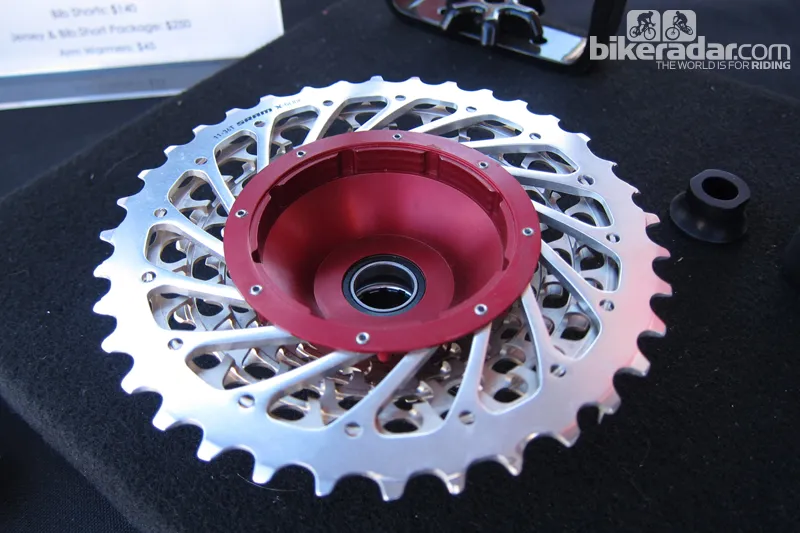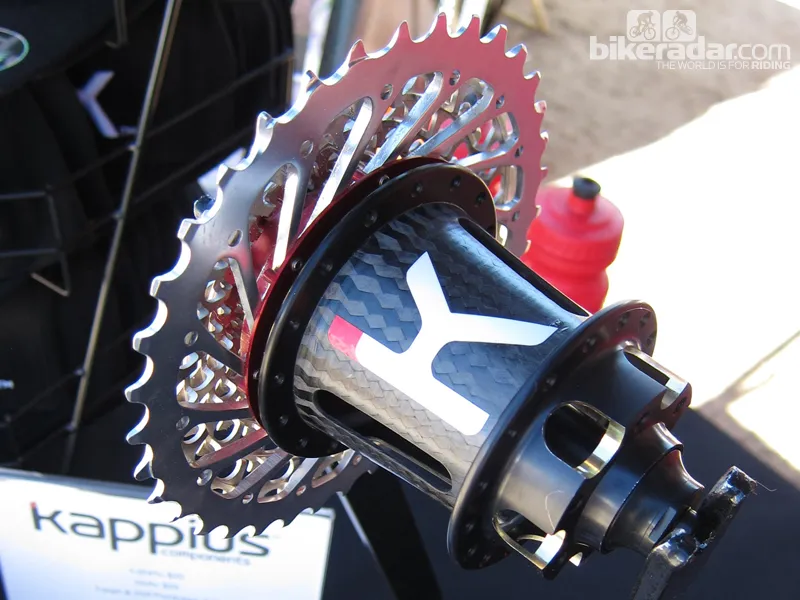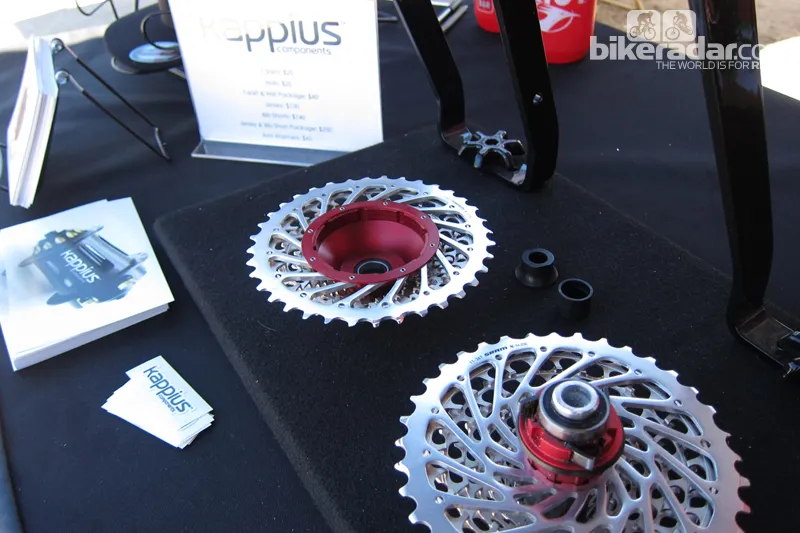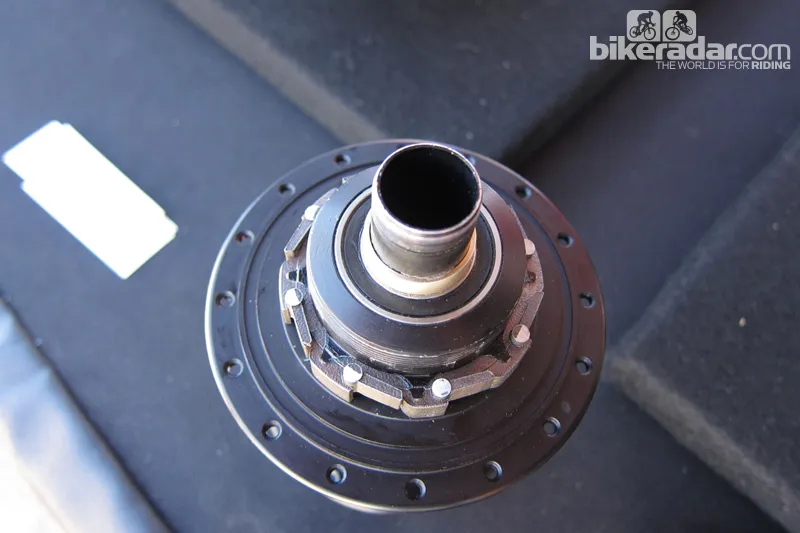One of the most interesting products on show at Sea Otter was a new carbon fiber hub with 240-point engagement and magnetically driven pawls. Designed by inventor Russell Kappius and his pro mountain biker son Brady, who's also an engineeer, it was hard not to be impressed by the Kappius Components Evolution.
The design does have a couple things holding it back: the incredible cost of the system – US$699 for the rear hub alone – and the fact it relies on SRAM's PowerDome cassettes. While SRAM look to be fully vested in their machined steel Red and XX level cassettes at the moment, a change would cause a production ‘challenge’ for Kappius, to say the least.
That aside, though, the Evolution hubs are very impressive. The ultra-light weight – the rear is claimed to weigh just 270g – is sure to draw many in but it was feeling the rear hub drive a wheel that sold the design to us. The eight magnetically ‘sprung’ pawls in the rear hub engage a 60-tooth hardened steel drive ring two at a time for an astounding 1.5° engagement.

A SRAM XX 10-speed cassette retrofit to the Kappius Evolution hub design
There’s another unusual feature hidden within the shell – an ultra wide 103mm bearing stance. This is possible because the drive mechanism remains external to the hub, and should produce a stiffer and stronger wheel.
The hubs roll on Enduro radial bearings for now, but Kappius senior says they'll soon incorporate Enduro’s angular contact bearings. Right now, Kappius offer 9mm quick-release, 15mm through-axle front and 142x12mm rear standards, Cannondale Lefty and standard 130mm road hubs. All are available in 28- or 32-spoke drillings.
The matching front hubs cost $299, weigh 110g and utilize Kappius's ‘differential pressure concept’, where holes in the hub shell allow for equal pressure on either side of the bearing’s seals so that there isn’t permeation due to differing air pressures. Kappius are four to six weeks out for new orders, which is the result of the fledgling brand’s small-scale production structure.
Right now, all of the parts are sourced in the US. The machined alloy flanges come from Oregon and the hardened steel drive-rings are made by a New York state company. The drive rings are created using DMLS (direct metal laser sintering), which is generally reserved as a manufacturing method for prototype production. This is reflected in the price – Kappius’s own cost on the drive-rings is a whopping $275 each.

The pricy drive-ring
On top of this, Brady does the majority of the carbon layup for the hub shells, and the duo do all of the final assembly by hand. Their work isn’t complete when the hubs are, either – they must spend upwards of a half-hour retrofitting a SRAM PowerDome style cassette (the labor cost for this is included in the hub price but the customer must provide or separately purchase a cassette). So although the hubs are expensive, Kappius won't ‘rake in profits’ based on their current production model. They're looking to overseas production, but that sews an even longer road for the small company.
Responding to our concerns about the hub's reliance on SRAM’s cassette design, Russell Kappius told us that sourcing their own cassette is a plausible alternative. “We’re trying to get some traction with some of these contacts [made at Sea Otter] to come up with some alternatives,” he said. And at Sea Otter, people noticed. The design drew interest from just about every major company with a hand in wheels. Some spent hours at the booth discussing the design and some came back multiple times, according to Kappius.
For now, however, Kappius have orders and they’re working to fill them. Based on our quick ‘touch and feel’ of the hubs we’re floored – they’re impressively smooth rolling and the 1.5 ° engagement isn't a subtle performance feature but a slap-you-in-the-face improvement. Add that to their claim that the drive mechanism is both stronger and more durable in design than anything else on the market and, well, we can start to understand why Russell has invested his retirement savings in building this company.


